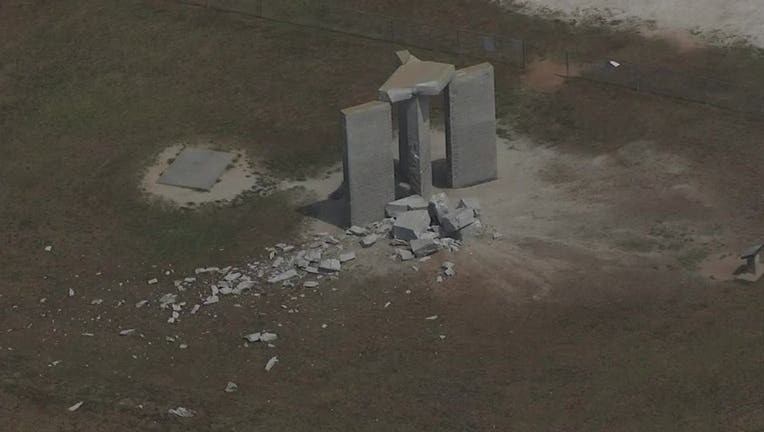The Georgia Guidestones, a controversial monument that stood in Elberton County, Georgia, for over four decades, were demolished in July 2022 after a bombing. One year later, the bomber has yet to be identified. The monument, often dubbed “America’s Stonehenge,” sparked numerous conspiracy theories due to its cryptic messages etched in multiple languages. But what did the Georgia Guidestones say, and what was the intention behind them? This article delves into the messages inscribed on the stones and explores the mysteries surrounding their creation.
The Georgia Guidestones: A Brief Overview
Before examining the messages, it’s important to understand what the Georgia Guidestones were. The monument consisted of six granite slabs, featuring a set of ten guidelines inscribed in eight different modern languages: English, Spanish, Swahili, Hindi, Hebrew, Arabic, Chinese, and Russian. These guidelines were intended as instructions for humanity in the event of a global catastrophe. In addition to these languages, shorter messages were inscribed along the sides of the monument in Classical Greek, Sanskrit, Egyptian hieroglyphs, and Babylonian cuneiform.
The monument faced considerable controversy during its existence. Former Georgia gubernatorial candidate Kandiss Taylor referred to the stones as “satanic.” Others speculated the messages were related to the antichrist.
Decoding the Ten Guidelines: What Did The Georgia Guidestones Say?
So, what did the Georgia Guidestones say in their English inscription? Here are the ten guidelines that were prominently displayed on the monument:
- “Maintain humanity under 500,000,000 in perpetual balance with nature.”
- “Guide reproduction wisely — improving fitness and diversity.”
- “Unite humanity with a living new language.”
- “Rule passion — faith — tradition — and all things with tempered reason.”
- “Protect people and nations with fair laws and just courts.”
- “Let all nations rule internally resolving external disputes in a world court.”
- “Avoid petty laws and useless officials.”
- “Balance personal rights with social duties.”
- “Prize truth — beauty — love — seeking harmony with the infinite.”
- “Be not a cancer on the Earth — Leave room for nature — Leave room for nature.”
These guidelines, while seemingly advocating for reason, sustainability, and global unity, also sparked controversy. The first guideline, in particular, which calls for a drastic reduction of the global population, was a major source of debate and fueled many conspiracy theories.
The Mystery of Robert C. Christian
The Georgia Guidestones were commissioned by a man using the pseudonym Robert C. Christian, who claimed to represent a small group of “loyal Americans.” He contracted the Elberton Granite Finishing Company to construct the monument, insisting on anonymity. Despite years of investigation, the true identity of Robert C. Christian and the group he represented remains a mystery. Wyatt Martin, an Elberton banker who died in 2021, was the only known point of contact for Christian, adding another layer of intrigue to the story. The lack of concrete information about the monument’s creators has contributed to the numerous interpretations and speculations surrounding its purpose.
The Demolition and the Unsolved Mystery
The bombing and subsequent demolition of the Georgia Guidestones marked the end of a controversial chapter in Elberton County’s history. While some celebrated the monument’s demise, others mourned the loss of a unique landmark. The search for the bomber continues, and the motives behind the attack remain unclear. The destruction of the Guidestones has only deepened the mystery surrounding their creation and purpose. The question of what did the Georgia Guidestones say and what it all meant will continue to be debated.
Although there was speculation regarding a time capsule buried beneath the monument, the Elbert County Road Department found only dirt upon demolition.
In conclusion, the Georgia Guidestones were more than just a monument; they were a symbol of mystery, controversy, and speculation. While what the Georgia Guidestones said is clear, their true meaning and the identity of their creators remain elusive, ensuring their legacy will continue to intrigue and provoke debate for years to come.

